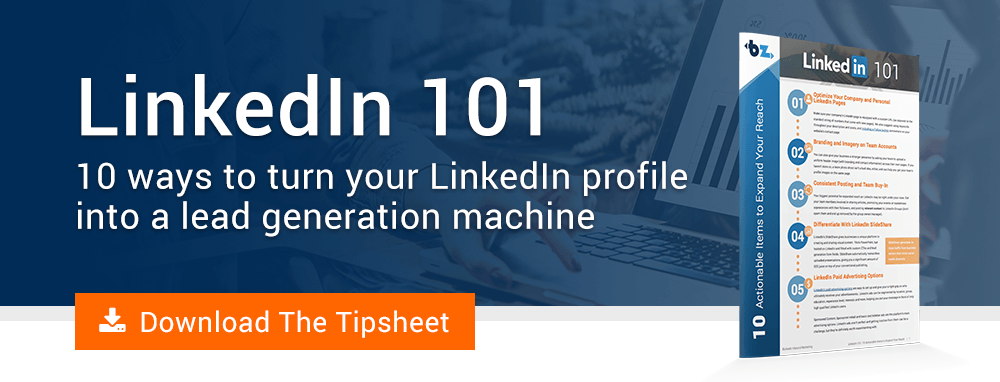Since Microsoft made the bold move of buying LinkedIn back in 2016, it has fast become the world’s leading online professional network.
With more than 500 billion users, LinkedIn filled an important niche in the social media world: It gave professionals at all levels a way to seek new opportunities and build connections.
At the same time, it has captured a tremendous share of the recruiting industry. Its advanced offerings for recruiters dominate the profession, creating a central hiring platform.
Last, but not least, LinkedIn has revolutionized the world of B2B sales.
Stats are difficult to come by, and B2B sales pros aren’t out there beating down the door to give us a precise count of their successes on LinkedIn. Still, most experts conclude that LinkedIn is responsible for a huge majority of B2B leads generated on today’s web.
Not only does it eclipse Facebook and Twitter, it truly stands in a class by itself.
It may be responsible for 80% – or more – of the B2B leads that come up online.
But ... there IS a catch.
As more and more sales professionals use LinkedIn InMails for prospecting, the quality of those InMail messages has been suffering. Many executives have started tuning out InMails entirely and others have put gatekeepers in charge of their LinkedIn experience.
That’s right – many sales pros are reproducing the mistakes of the past with their InMails. And if that trend continues, InMails may not be of value for very much longer.
That could subtract millions, or even billions, from the B2B sector as a whole. Sales experts doing things right will have an even harder job ahead of them.
Of course, they’ll also have the potential to make even more money.
So, how can you make sure your InMails don’t sound like cold calls?
Warm Up Your InMails With Warm Prospecting Techniques
LinkedIn centralizes more information about prospects than ever before, so why are so many B2B sales representatives still using the “spray and pray” method of contacting as many leads as possible with same-sounding messages?
Partially, it’s a matter of scale. Although the data on LinkedIn is fresh, deep, and usually very accurate, it’s still an enormous amount to wade through. Finding the decision-maker can still seem like searching for a needle in a haystack.
But: You can do it right when you dedicate yourself to warm prospecting.
Warm prospecting is an approach that leverages deep research to help you micro-target leads who will truly benefit from what you have to offer. Generally, it means looking for trigger events – changes in the lead’s business situation that make your solutions more valuable to them.
Using LinkedIn to the utmost means aligning your strategy to its unique strengths, though.
Here’s how:
Start With a Realistic Scale and Speed.
Warm prospecting means personalization, and personalization will go straight to heck if you’re trying to send out 100 messages a day. Always start with a number of contacts you can handle comfortably. Expand if you find yourself with more time (and focus!) at the end of the day.
Look for the Right Social Signals.
LinkedIn provides you with its own specialized set of signals to follow, so tune in to your leads. Track their activities on Groups and read their published content so you have a strong basis for a productive discussion on mutual interests. Understanding where they’re coming from is key.
Supplement With Outside Research.
Traditional trigger events include business game-changers like new products, new locations, M&A, or awards won. Not all of these will be obvious on LinkedIn itself, so you’ll still need to do some background research. Google Alerts and your lead’s company blog are key resources.
Don’t Ask for the Meeting.
Sad but true: If you ask for the meeting by InMail, you’ve effectively killed your response rates. This is the #1 InMail mistake you have to avoid. It’s vital to look at InMail as another part of your customer-focused inbound sales strategy. So, what SHOULD you do instead?
Ask for Permission.
InMail has two purposes when it comes to selling on LinkedIn:
- Getting an affirmation (the lead says “Yes, I will follow up on this.”)
- Getting an inquiry (the lead asks, “Can you tell me more about that?”)
In your first touch InMail, you have a chance to demonstrate your knowledge of what your lead is really about and show you grasp their pain points. If you do both those things right, you’ll find your response rate soars and real best-fit clients will be attracted to you.
You can’t control how other people are using InMail, but you can commit to do it the right way every time. That empowers you to keep improving and winning discovery calls while the others out there are just spinning their wheels!


Rob Steffens
I am the Director of Marketing here at Bluleadz. I'm a huge baseball fan (Go Yankees!). I love spending time with friends and getting some exercise on the Racquetball court.